Medicare Advantage Plans New York 2026
Curious about the potential Medicare Advantage plans in New York
Key Takeaways
- Medicare Advantage Plans in New York will likely offer a variety of coverage options, including HMO, PPO, and Special Needs Plans, tailored to meet different health care needs and preferences.
- Some Medicare Advantage plans may provide additional healthcare coverage, which may include dental, vision, and hearing care not covered by Original Medicare.
- Enrollment in Medicare Advantage Plans requires being enrolled in Medicare Part A and B, and understanding the specific enrollment periods is essential for maintaining continuous coverage.
Compare Plans in One Step!
Enter Zip Code
Understanding New York Medicare Advantage Plans 2026
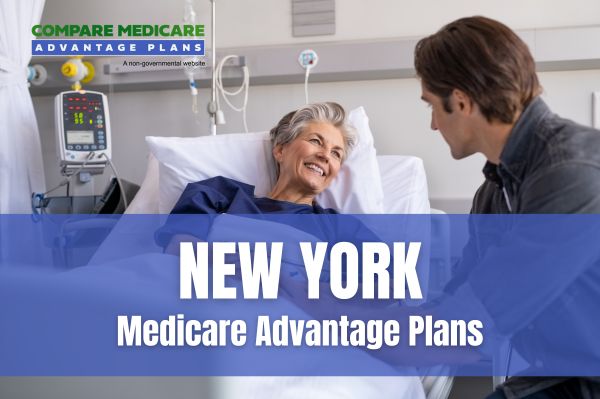
Medicare Advantage Plans in New York may be a popular choice for many beneficiaries, likely offering a range of benefits that might go beyond Original Medicare. These plans are provided by private insurance companies and must comply with both state and federal regulations.
Medicare Advantage plans in New York may include various types of coverage, such as medical and drug coverage, depending on the plan structure. Certain plans could potentially simplify the healthcare experience by offering comprehensive coverage and sometimes additional benefits that could expand access, possibly making them an attractive option for many beneficiaries.
Types of New York Medicare Advantage Plans Available
New York will likely offer a diverse array of Medicare Advantage plans, each tailored to meet different healthcare needs. The major types of Medicare Advantage plans available include Health Maintenance Organization (HMO) plans, Preferred Provider Organization (PPO) plans, and Special Needs Plans (SNPs). Each type of plan comes with its own set of benefits and requirements, catering to various preferences and medical needs.
Whether you’re looking for a plan that could offer lower premiums, more flexibility in provider choice, or specialized care for chronic conditions, New York’s Medicare Advantage plans will likely have something to offer. Let’s delve into the specifics of each plan type to help you understand which one might be the best fit for you.
HMO Plans
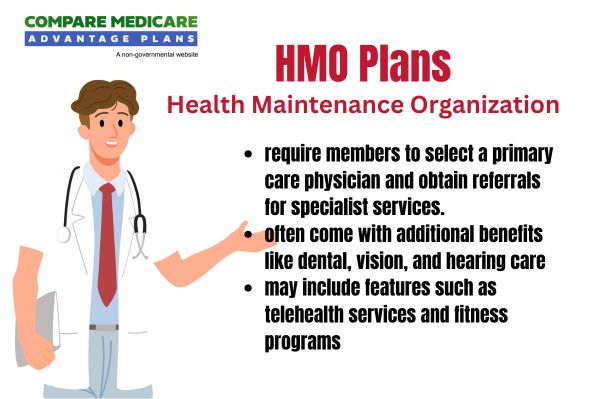
HMO plans have been a popular choice for those seeking cost-efficient healthcare options. These plans typically require members to select a primary care physician (PCP) who coordinates all their healthcare needs and provides referrals to specialists. This model promotes comprehensive care and can help manage health conditions effectively by ensuring continuity of care.
In New York, HMO plans might have lower premiums compared to other types of Medicare Advantage plans. Members typically need to receive healthcare services from providers within the plan’s network, except in emergencies. This approach could help keep costs down but may limit provider choice. Despite this limit, HMO plans emphasize preventive care and wellness services, likely making them a great option for maintaining overall health.
PPO Plans
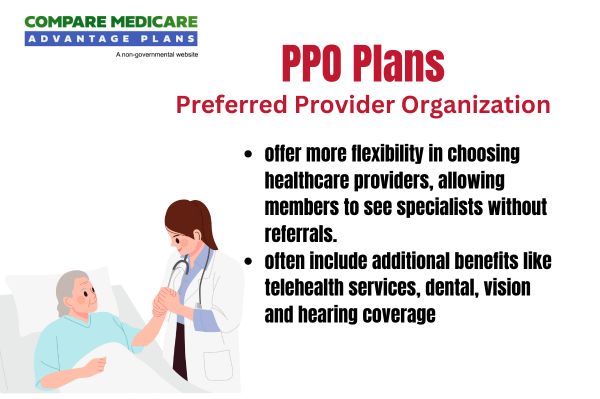
PPO plans offer more flexibility compared to HMO plans, allowing members to see any healthcare provider without needing a referral. This flexibility might benefit those who prefer to manage their healthcare and seek specialist services without needing a referral.
Members of PPO plans may pay lower costs when using network providers but have the option to go out-of-network at a higher cost. This structure provides a balance between flexibility and cost-efficiency.
PPO plans in New York will likely be designed to provide comprehensive medical coverage, possibly making them an excellent choice for those who value choice and convenience.
Special Needs Plans (SNPs)
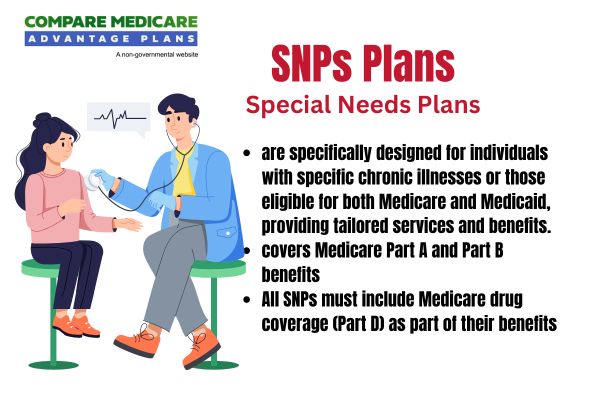
Special Needs Plans (SNPs) are tailored Medicare Advantage plans designed to meet the unique healthcare needs of specific groups, such as individuals with chronic conditions or those who are dual-eligible for Medicare and Medicaid. These plans could provide additional benefits and services that address the specific requirements of their members, possibly offering a more personalized approach to healthcare.
In New York, there will likely be various types of SNPs, including Dual Eligible Special Needs Plans (D-SNPs), which cater to individuals eligible for both Medicare and Medicaid. These plans may include specialized care coordination and access to services that could go beyond standard Medicare coverage, possibly ensuring that members receive comprehensive and integrated care.
Enrollment in SNPs generally requires verification of eligibility for the specific type of special needs status defined by the plan.
Overview of New York Medicare Advantage Plans 2026
Enrolling in a Medicare Advantage Plan in New York could streamline the approval process for necessary medical services, likely ensuring that beneficiaries can receive timely and efficient care. The comprehensive coverage these plans offer will likely aim to improve the overall experience for enrollees, likely facilitating easier access to necessary healthcare services.
Covered Services and Potential Benefits
Medicare Advantage plans are required to cover all services provided by Original Medicare, including hospital stays and outpatient care. However, some plans may go beyond the basics by potentially offering additional benefits such as vision, hearing, and dental coverage, as well as prescription drug coverage. This comprehensive approach could potentially ensure that beneficiaries receive well-rounded healthcare coverage tailored to their needs.
However, plans have the autonomy to set their rules regarding the use of prior authorization for services, which could influence access. These potential benefits and services could make Medicare Advantage plans an attractive option for many beneficiaries.
Possible Benefits of New York Medicare Advantage Plans 2026
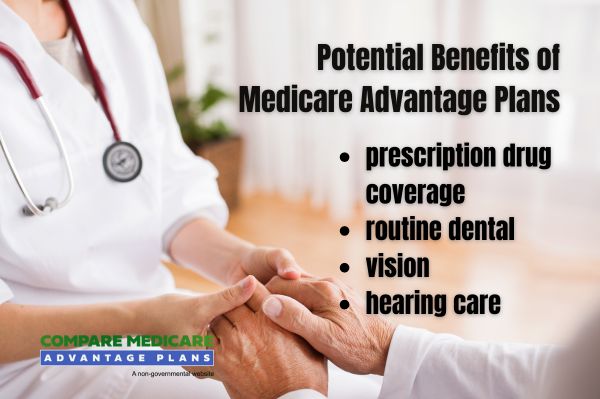
Certain Medicare Advantage plans in New York may incorporate additional services that could go beyond Original Medicare, such as vision and dental coverage. Some plans may also offer a cap on out-of-pocket expenses, possibly providing financial protection for enrollees and making healthcare costs more predictable. This potential limit could benefit those with chronic conditions or high medical expenses.
With these potential benefits, New York Medicare Advantage plans could potentially ensure that enrollees receive comprehensive and coordinated care.
Enrollment Process for New York Medicare Advantage Plans
Enrolling in a Medicare Advantage plan in New York requires individuals to be enrolled in Medicare Part A and Part B. The enrollment process is straightforward and can be completed by using this website or by calling one of our licensed agents using the number on this website. This flexibility ensures that beneficiaries can choose the method that best suits their preferences and needs.
Understanding the timing of enrollment is crucial for ensuring continuous coverage. Let’s explore the different enrollment periods and how to phase in what you need to know about each.
When to Enroll
The Initial Coverage Election Period spans three months before and three months after turning 65, allowing individuals to enroll during this time. Missing these deadlines can result in applications being considered withdrawn by CMS.
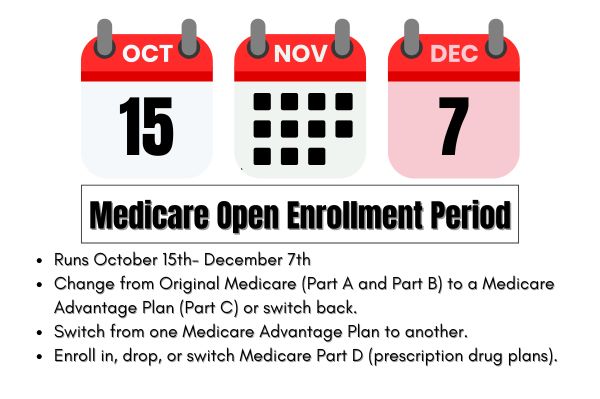
The Annual Enrollment Period, running from October 15 to December 7 each year, is another key time for enrollment. During this period, individuals can switch plans, enroll in new ones, or make changes to their existing coverage. Coverage typically begins on January 1 following the enrollment period.
Special enrollment periods are also available for specific life events, providing additional flexibility in enrollment.
Different Enrollment Periods
There are several designated enrollment periods throughout the year when beneficiaries can enroll in or make changes to their Medicare Advantage plans. The Initial Enrollment Period lasts seven months surrounding an individual’s 65th birthday, providing ample time to choose the right plan.
The Annual Enrollment Period, from October 15 to December 7, allows beneficiaries to review and adjust their coverage based on changing needs.
Special Enrollment Periods provide opportunities to enroll or make changes due to specific life events, such as moving or losing other health coverage. Understanding these periods is essential for maintaining continuous and appropriate coverage.
OEP, AEP, Special Enrollment
The Annual Election Period (AEP), occurring from October 15 to December 7 each year, is a critical time for beneficiaries to switch plans or enroll in new ones. This period allows for significant flexibility in adjusting coverage to better suit individual needs.
The Open Enrollment Period (OEP), from January 1 to March 31, provides an additional opportunity to make changes to Medicare Advantage plans outside of AEP. Special Enrollment Periods (SEPs) cater to specific life events, offering further flexibility in enrollment.
Dual-eligible individuals may have a monthly integrated-care SEP to enroll in integrated D-SNP plans, possibly enhancing their options for coordinated care. These enrollment periods ensure that beneficiaries can maintain appropriate and timely coverage.
Potential Costs Associated with New York Medicare Advantage Plans 2026
Understanding the potential costs associated with Medicare Advantage plans could be crucial for making informed decisions. Breaking down the possible premiums, co-pays, and out-of-pocket maximums could provide a clearer picture of the financial aspects of these plans.
Premiums and Co-Pays
Some Medicare Advantage plans may incorporate a mix of premiums and out-of-pocket costs, which could vary significantly based on the plan selected by beneficiaries. This might make these plans an attractive option for those looking to minimize their monthly expenses.
Co-pays for Medicare Advantage plans in New York may vary widely based on the specific plan and services accessed. Annual adjustments to co-pays will likely be based on market conditions and regulatory changes may impact overall costs for beneficiaries.
Out-of-Pocket Maximums
One of the potential advantages offered by some Medicare Advantage plans could be the cap on out-of-pocket expenses. This cap could potentially ensure that beneficiaries are protected from excessive medical expenses. By keeping out-of-pocket costs predictable and manageable, these plans could offer a level of financial security that is highly beneficial for beneficiaries.
Potential Services and Benefits
Medicare Advantage plans in New York offer a variety of services, including hospital care, physician visits, preventive services, and emergency care. These plans are required to cover all services that Original Medicare covers. Some Medicare Advantage plans might provide coverage for prescription drugs as part of their standard benefits.
Certain plans may also offer additional benefits such as dental, vision, and hearing services that are not covered by Original Medicare. Emergency services must be covered without prior authorization, likely ensuring that beneficiaries can access immediate care when needed.
These potential benefits will likely allow Medicare Advantage plans to provide well-rounded healthcare coverage tailored to the needs of their members.
How to Qualify for New York Medicare Advantage Plans 2026

To be eligible for a Medicare Advantage plan, you must have both Medicare Part A and Part B. Additionally, you need to reside within the service area of the specific Medicare Advantage plan you wish to join. This residency requirement ensures that beneficiaries have access to local network providers and services.
Individuals must be U.S. citizens or have legal residency status to qualify for Medicare Advantage plans. When applying, it’s necessary to provide your Medicare number along with the start dates of your Part A and/or Part B coverage.
Enrollment is only allowed during specific periods, such as the Initial Enrollment Period or the Open Enrollment Period. Understanding these qualifications is essential for ensuring eligibility and continuous coverage.
Contracted Network and Access to Care
Medicare Advantage plans must maintain an adequate network of healthcare providers to ensure beneficiaries have timely access to care. This includes both routine and emergency services as part of the contracted network requirements. Beneficiaries should have clear information regarding in-network providers to make informed choices about their healthcare.
Plans are required to regularly update their provider directories to accurately reflect available network providers. The Centers for Medicare & Medicaid Services (CMS) emphasizes the importance of timely access to care within contracted networks. By ensuring an adequate network and clear communication, Medicare Advantage plans will likely aim to provide reliable and efficient healthcare access.
Comparing New York Medicare Advantage Plans to Original Medicare
Some Medicare Advantage plans might include additional benefits not available with Original Medicare, such as vision, dental, and hearing coverage. These potential benefits could make these plans an attractive option for comprehensive coverage.
Examining the differences in coverage and costs between these plans and Original Medicare could help in making informed decisions.
Coverage Differences
While Original Medicare primarily covers hospital and medical insurance, certain Medicare Advantage plans may cover additional services like dental, vision, and hearing. Original Medicare allows patients to choose any provider who accepts Medicare, while Medicare Advantage plans may restrict services to a network of providers. This potential network restriction could impact provider choice but will likely result in more coordinated care.
Certain Medicare Advantage plans may also include prescription drug coverage, unlike Original Medicare which typically does not. With this potential integration of a wider range of services, Medicare Advantage plans could provide more comprehensive coverage options.
Cost Comparisons
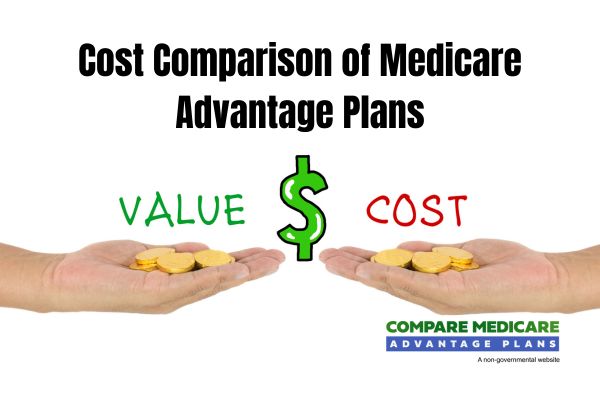
Medicare Advantage plans may offer lower out-of-pocket costs for services compared to Original Medicare, which may leave beneficiaries responsible for at least 20% of costs. While Medicare Advantage plans may charge lower premiums, they may also impose limits on the total annual out-of-pocket expenses, unlike Original Medicare, which does not have a cap.
Beneficiaries in Medicare Advantage plans may face different cost-sharing structures that could impact overall expenses depending on the frequency of medical services utilized. By comparing these cost structures, beneficiaries can choose the plan that best fits their financial and healthcare needs.
Emergencies and Referrals
In HMO plans, members typically must use a network of designated providers for care, except in emergency situations. Some HMO plans may not require referrals for seeing specialists, offering more flexibility in accessing specialist care.
PPO plans, on the other hand, allow members to access services from out-of-network providers without needing a referral. Medicare Advantage plans in New York generally provide coverage for emergency services at any hospital, regardless of network affiliation. However, prior authorization from the plan may be required for non-emergency referrals to specialists.
Comprehending these various differences could help beneficiaries navigate their healthcare options more effectively in various situations.
Summary
Navigating the potential Medicare Advantage Plans in New York might be complex, but understanding the key aspects could make the process easier. From the types of plans available and the potential benefits to the enrollment process and cost considerations, being well-informed is crucial for making the best healthcare decisions.
Medicare Advantage Plans could offer a comprehensive and flexible option for healthcare coverage, possibly providing additional benefits and financial protections. As you consider your options
Frequently Asked Questions
→ What are the differences between HMO and PPO Medicare Advantage plans?
The differences between HMO and PPO Medicare Advantage plans lie in the level of flexibility and cost. HMO plans require a primary care physician and referrals for specialists, typically with lower premiums and a restricted provider network. In contrast, PPO plans offer greater freedom to see any provider without referrals, albeit often with higher costs for out-of-network services.
→ When can I enroll in a Medicare Advantage plan?
You can enroll in a Medicare Advantage plan during your Initial Coverage Election Period, which starts three months before you turn 65 and lasts for three months afterward. Additionally, the Annual Enrollment Period is from October 15 to December 7 each year, with Special Enrollment Periods available for certain life events.
→ What additional benefits could Medicare Advantage plans offer compared to Original Medicare?
Some Medicare Advantage plans may provide additional benefits compared to Original Medicare, which might include vision, dental, hearing coverage, and prescription drug coverage. These potential features could enhance your overall health care experience.
→ How do Medicare Advantage plans handle emergency services and referrals?
Medicare Advantage plans cover emergency services at any hospital, regardless of network. HMO plans require referrals for non-emergency specialists, while PPO plans do not.

ZRN Health & Financial Services, LLC, a Texas limited liability company



